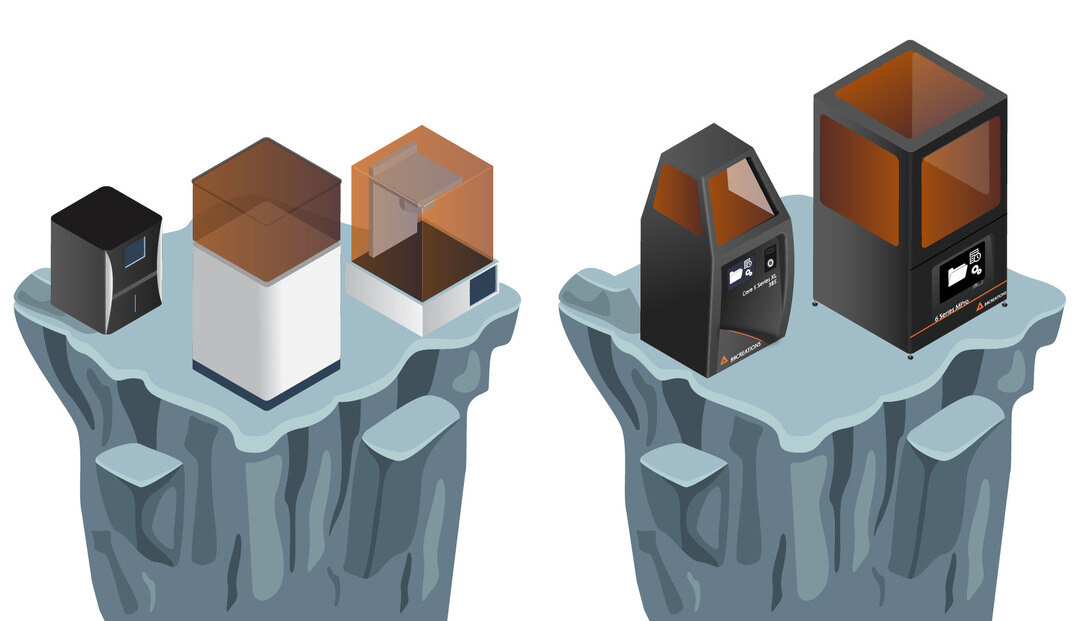Achieving true dimensional accuracy in additive manufacturing requires more than just selecting the right printer—it demands a comprehensive approach that addresses every stage of the process. While manufacturers often advertise impressive precision, real-world conditions introduce variables that can impact repeatability and reliability. From Design for Additive Manufacturing (DFAM) to rigorous QA-QC processes, this blog explores essential strategies for minimizing variability, optimizing workflows, and ensuring consistent, high-quality results in 3D printing.
Bridging the Gap Between Accuracy Claims and Reality
In the world of additive manufacturing, claims of dimensional accuracy and repeatability often outstrip reality. This discrepancy can create significant challenges for companies relying on 3D printing for prototyping and production. The root of the issue frequently lies in the gap between the manufacturer's advertised capabilities and what is achievable under real-world conditions. Variations in the additive manufacturing process, from software data loss to post-processing inconsistencies, play a critical role in this gap.
To bridge this gap, it's essential to have a clear understanding of the entire additive manufacturing process, including the limitations of current technology and the specific needs of your project. Businesses must critically evaluate claims by manufacturers, scrutinizing the details of how measurements are taken and under what conditions. Only by acknowledging and addressing these discrepancies can companies begin to develop more accurate and repeatable additive manufacturing processes that meet their specific needs.
Essential Strategies for Enhancing Dimensional Accuracy
Achieving dimensional accuracy in additive manufacturing is not just about choosing the right printer. It involves a comprehensive strategy that encompasses every stage of the process. One of the first steps is selecting a platform capable of meeting your accuracy requirements consistently. This means not only considering the capabilities of a single printer but also how those capabilities translate across a fleet of machines.
Stability in the additive manufacturing process is crucial. This involves implementing a robust quality assurance and quality control (QA-QC) framework that ensures consistency from the initial CAD design to the final printed product. By focusing on process stability and understanding the potential sources of variation, companies can reduce errors and improve accuracy. Furthermore, establishing detailed protocols for each stage of production, including software data handling, printer configuration, and post-processing, ensures that every aspect of the process contributes to the desired outcome.
The Role of Design for Additive Manufacturing (DFAM)
Design for Additive Manufacturing (DFAM) is a critical concept that should be at the forefront of any strategy to enhance dimensional accuracy. Unlike traditional manufacturing, where designs are often adjusted to fit the capabilities of the manufacturing process, DFAM requires a fundamental understanding of the unique opportunities and constraints of 3D printing.
DFAM involves designing parts with specific consideration for the critical dimensions and surfaces that impact the final product's performance. It's about optimizing the orientation and layout of parts within the build volume to achieve the highest accuracy and repeatability. By integrating DFAM principles from the beginning, companies can ensure that their designs are not only manufacturable but also optimized for the unique characteristics of additive manufacturing.
Implementing Quality Assurance and Quality Control (QA-QC) Processes
Implementing a robust QA-QC process is essential for ensuring the repeatability and accuracy of additive manufacturing. This involves more than just inspecting the final product; it's about creating a comprehensive framework that monitors and controls every stage of the manufacturing process.
A successful QA-QC process includes regular calibration and validation of equipment, monitoring of environmental conditions, and rigorous testing of materials. By establishing key quality metrics and continuously measuring them, companies can ensure that their manufacturing process remains stable and within the desired specifications. Additionally, integrating advanced technologies like AI and machine learning can help predict and prevent potential issues before they affect the final product, further enhancing the reliability of the manufacturing process.
Leveraging Technology and Partnerships for Scalability
To scale additive manufacturing effectively, companies must look beyond individual printers and consider the entire production ecosystem. This means partnering with technology providers who understand the complexities of additive manufacturing and can offer solutions tailored to specific industry needs.
Leveraging advanced technologies such as cloud-based software solutions, machine learning, and AI can significantly enhance scalability. These technologies enable real-time monitoring and optimization of the manufacturing process, ensuring that even as production volumes increase, quality remains consistent. Moreover, building strong partnerships with suppliers and technology providers ensures access to the latest innovations and best practices, keeping your manufacturing process at the cutting edge.
Navigating the Challenges of Post-Processing and Material Selection
Post-processing and material selection are often overlooked aspects of the additive manufacturing process, yet they play a critical role in achieving dimensional accuracy and repeatability. Post-processing steps, such as cleaning, curing, and finishing, can introduce variability that affects the final product's dimensions and properties.
To navigate these challenges, it's essential to develop standardized post-processing protocols that minimize variability. This includes selecting materials that are compatible with your post-processing methods and understanding how different materials respond to the printing and post-processing conditions. Additionally, working closely with material suppliers to ensure consistent quality and performance can help mitigate the risk of variability introduced by material inconsistencies.
In conclusion, enhancing dimensional accuracy and repeatability in additive manufacturing requires a holistic approach that encompasses every stage of the process. By focusing on process stability, leveraging advanced technologies, and building strong partnerships, companies can future-proof their additive manufacturing investments and ensure they meet industry standards.
Explore video testimonials from B9Creations, providing insights into the outcomes achieved through our 3D printing technology, capabilities & partnerships.




